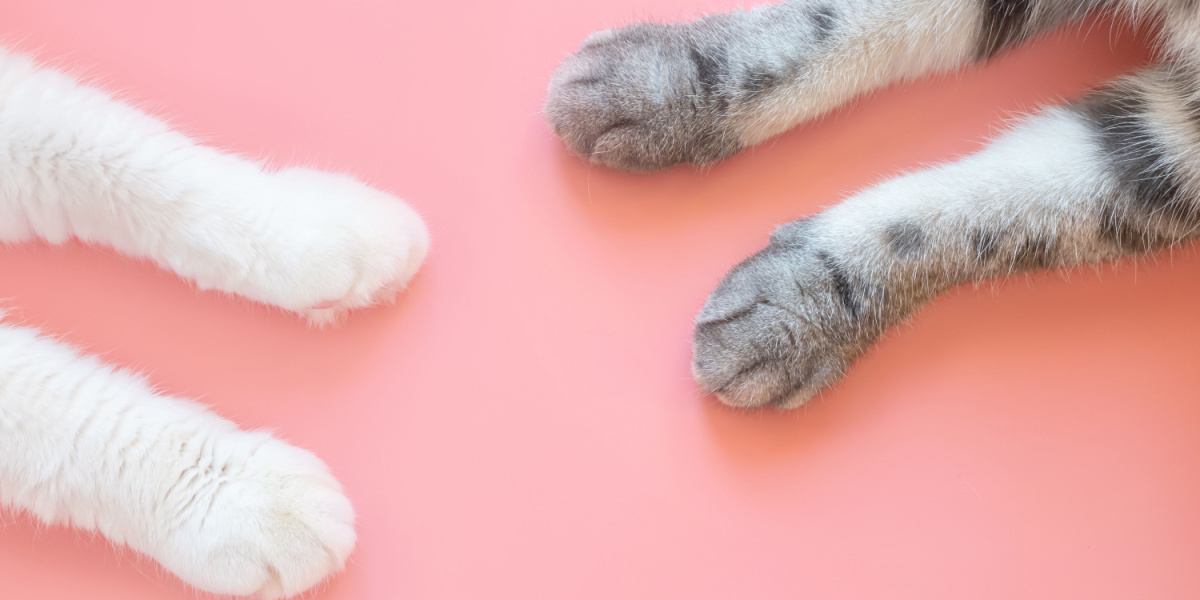
Cats are amazing creatures. They dazzle us with their flexibility, crazy cat antics, and ability to understand us in ways that humans can’t.
But when it comes to cats, there are many exciting things about their body and mind that intrigue us. And, most of the time, we do not think much about these adorable attributes we cannot help but love.
When it comes to cat paws, there are actually several interesting facts about them that prove to us just how amazing a cat’s body parts can be. Keep reading to learn 10 interesting facts about cat paws you may not have known.
1. Front Paws Have More Toesies Than Back Paws

When it comes to cat paws, there are actually several interesting facts about them that prove to us just how amazing a cat’s body parts can be.
If you were to take a close look at your cat’s paws, you might be surprised to learn that your kitty has more toes on their front paws than they do their back paws. Cats have five digits on the front paws, and four on the back.
The extra one on each of their front paws is known as the their dewclaws. These are sort of like thumbs if you think about it. Many purebred dogs will have these removed at an early age, but for cats, they stay.
2. Cats Walk Tiptoed
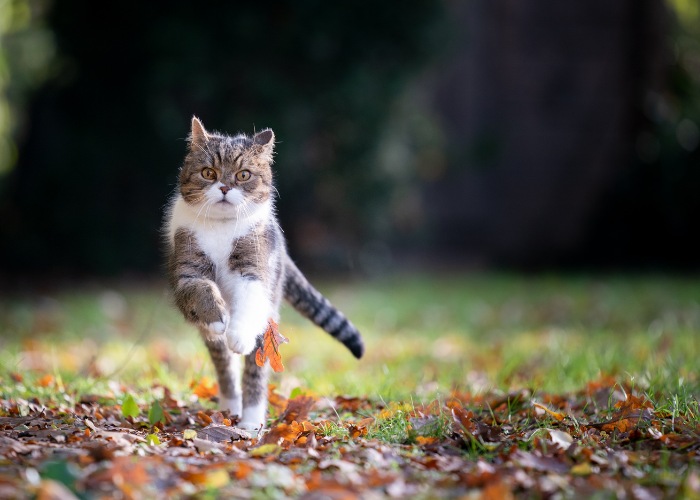
Cats, as well as dogs, are known as digitigrades.
The anatomy of a cat is a very impressive thing. And while you might think that your cat is walking around on its feet, in actuality, your cat is walking around on their toes. Cats, as well as dogs, are known as digitigrades.
This means that they walk upright and have evolved to walk on their toes for survival. This adaptability is what helped them to thrive in the wild until they were domesticated by humans centuries ago. Do you know what other animals walked this way? Dinosaurs!
3. Some Cats Can Have Extra Toes Aka Polydactyl Cats
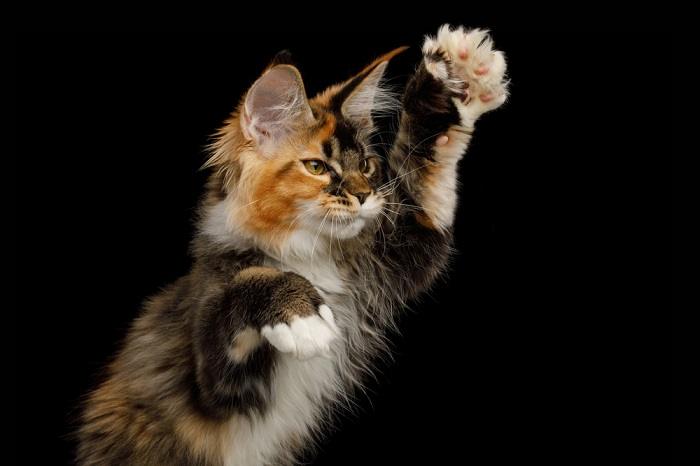
And out of all cat breeds, Maine Coon cats are the most common when it comes to cats with polydactylism.
Polydactyl cats, also known as Hemingway cats, are cats that have extra toes on their paws. This can occur on either the front and/or back paws. This congenital physical anomaly is known as polydactylism.
This genetic mutation is often adored by cat lovers across the globe, because what’s not to love about a cat that has extra toesies! Polydactyl cats might seem rare, but in truth, they are not. And out of all cat breeds, Maine Coon cats are the most common when it comes to cats with polydactylism.
4. Cats Have A Dominant Paw
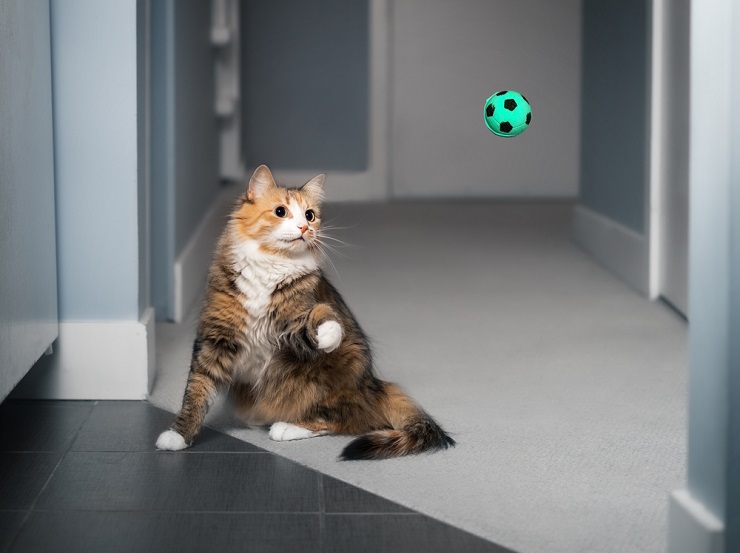
Like humans, most cats are not dexterous.
Like humans, most cats are not dexterous. And some cat experts even wager to say that a cat’s dominant paw can give insights into their personality. And what’s even more interesting?
Science tells us that male cats are typically left-pawed; female cats are generally right-pawed. Want to know which paw is your cat’s dominant paw? Watch closely when they step over an object, paw at a toy, or go up and down the stairs. The paw that they use first is their preferred paw!
5. Cat Paws Serve As Important Grooming Tools
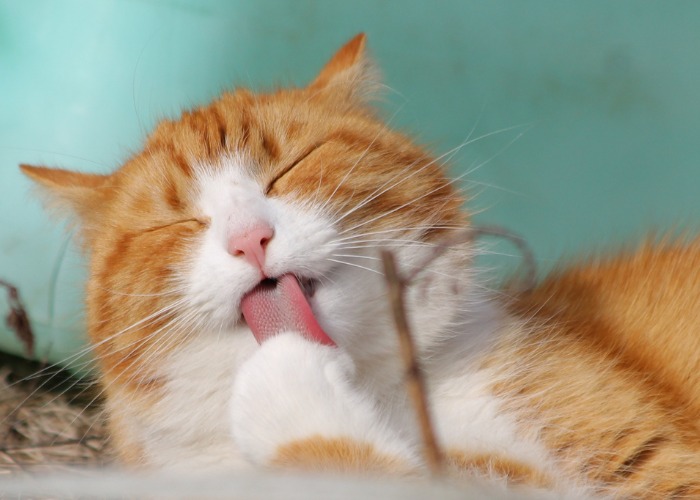
Your cat uses their paws for many things—and grooming falls high on that list.
Your cat uses their paws for many things—and grooming falls high on that list. The average cat spends five hours a day grooming themselves, and they utilize their paws like tiny cat loofahs to rub and scrub their fur and body parts.
6. Cat Paws Have Scent Glands
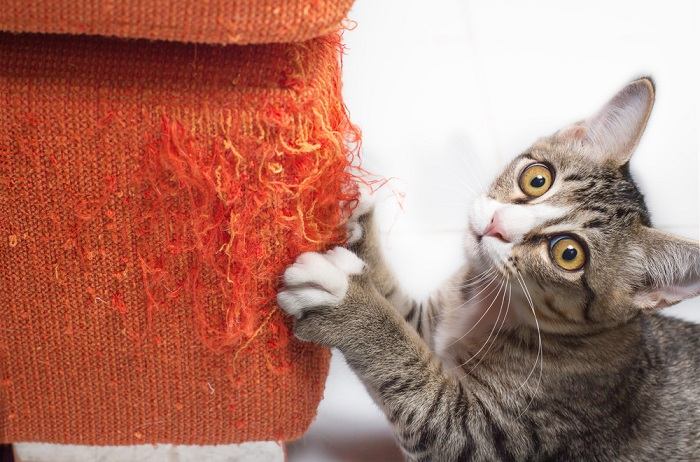
Just as your cat has scent glands around their forehead and cheeks, they also have scent glands in their paws.
Just as your cat has scent glands around their forehead and cheeks, they also have scent glands in their paws. This is why when they knead you, it truly means something, because they are labeling you as their own. This is just another method that cats use to mark their territory.
7. Cats Are Extremely Quiet When Walking On Their Toes
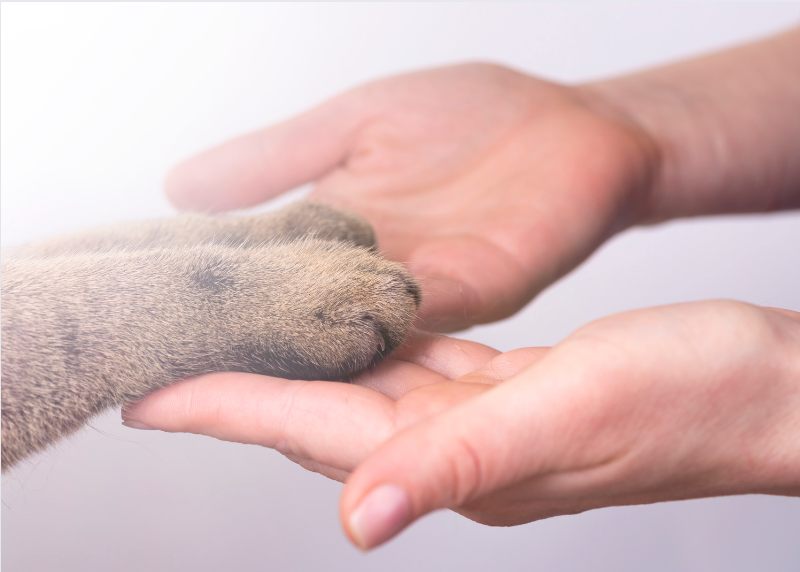
Should your cat allow you to gently hold or caress their paw, you should take this as the ultimate sign of trust.
Your cat is an excellent hunter, and this is not only because of their sharp might and natural inclination to hunt prey but also due in part to just how quiet they are when walking around on their tiptoes.
Cats are very sneaky, and those quiet little steps they take when they are stalking their unsuspecting prey are what give them such a high success rate. (But, if your cat is allowed to go outdoors, you should highly consider putting a bell on their collar to reduce their hunting success.)
8. Cat Paws Are Sensitive
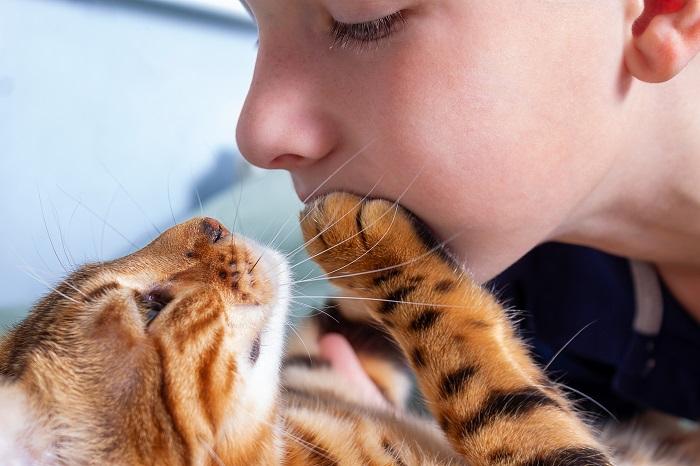
Should your cat allow you to gently hold or caress their paw, you should take this as the ultimate sign of trust.
Those absolutely adorable toe beans and paw pads might have you begging to squeeze them, but once you understand your cat’s genetic makeup, you might want to think twice before doing so. Your cat’s paw pads aid in their ability to hunt, and they are loaded with many nerve receptors. This means that your cat’s paws are highly sensitive to touch.
And, because of this reason, it’s why so many cats are not fans of having their paws touched. Should your cat allow you to gently hold or caress their paw, you should take this as the ultimate sign of trust. Your cat is vulnerable when you do this, and they are allowing you to do this to them because they trust you and know that you will not do them harm. Aww!
9. Your Cat’s Paws Act As Shock Absorbers
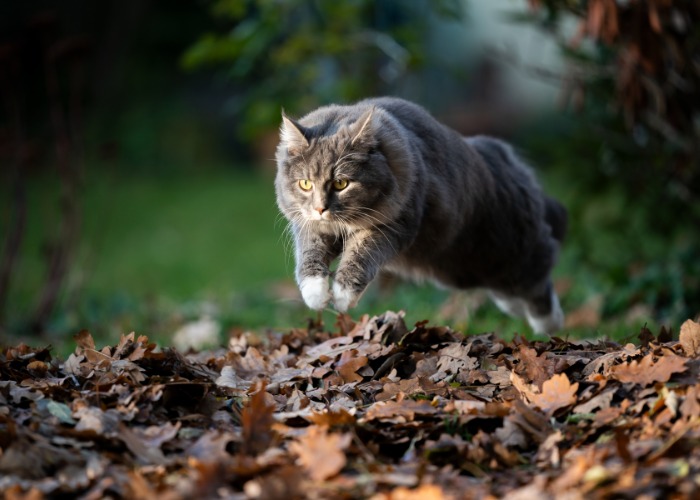
Regardless of the fall or jump, cat paws act as shock absorbers upon landing.
Just like the saying goes, cats tend to land on their feet. This is mostly due to their righting reflex, but regardless of the fall or jump, their paws act as shock absorbers upon landing. And the same goes for big cats, too. And some even wager to say that a cat’s paws have the ability to detect sound as well.
10. Cats Sweat Through Their Paw Pads
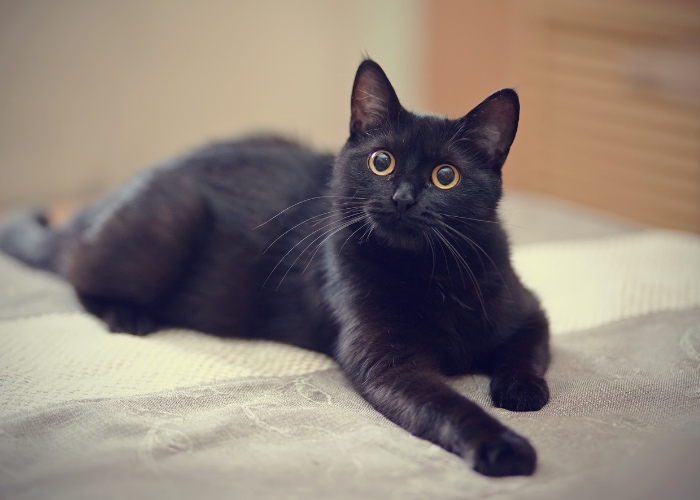
Similar to canines, cats do not sweat in the way that we humans do.
Similar to canines, cats do not sweat in the way that we humans do. Instead, when they are overheated and attempting to cool off, they will pant, and they will also emit sweat through their paw pads. This can also occur in times in which they are stressed—like at the vet’s office.
Now that you’ve learned all about cat paws, check out this next article to discover 23 interesting facts about cat fur you may not have known.
Frequently Asked Questions
Are cat paws unique?
Cat paws are unique to each individual kitty, similar to human fingerprints. While most cats have paw pads with ridges and patterns, the specific characteristics of these features may vary between cats, resulting in distinct paw prints.
What are cats paws called?
A cat's paws are commonly referred to as "paws" or "toe beans."
Do cats have feet or paws?
While the term "feet" is commonly used to describe the lower appendages of animals, cats are more accurately said to have paws. This is because the word "paws" specifically refers to the fleshy, padded parts at the end of a cat's legs.


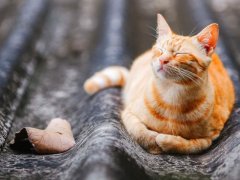





Here is another example of a cat panting that is not heat related. My Siamese type senior cat is in her open carrier looking all around as she likes to do in my air conditioned car with darkened windows all around on our way to the vet for her every 3 month blood work. She is talking & yowling up a storm & just generally letting me know that she is not happy & every so often she starts panting. She has gotten herself so worked up because I believe that she knows where she is going that she even starts panting. I try to pet her & comfort her all to no avail. She just hates driving in the car. But the panting has nothing to do with being over heated!
Fascinating & fun article. I am concerned though when I read “… when they are overheated and attempting to cool off, they will pant…”
When I saw my young & otherwise healthy long-haired cat panting while resting in the shade on a hot summer afternoon in Texas, I called an emergency vet to see if this was normal behavior. The Dr said panting was not normal for cats like it is for dogs when they pant to cool off, then sounded a bit panicked when he told me to rush her there. She was immediately put on oxygen. After bloodwork & x-rays, she was diagnosed with mild asthma. We left with a kitty rescue inhaler, prescriptions and instructions for her to be an inside cat for the rest of her life, which I adored and my husband learned to accept. 😄
My cat’s asthma has been managed well since bringing her indoors & giving her asthma medication. Plus after we moved from Texas to the Pacific NW, she doesn’t even need medication anymore. Yay!
Can you tell me why there is a discrepancy between this article and what the ER vet said? Thank you.
Hmm, interesting. It is widely accepted that cats will pant to cool off when they’re overheated, but it is not as normal for them to do this as dogs, like your vet said. While it’s good that your vet recognized this and was able to diagnose your cat, I wouldn’t assume that all cats who pant in the heat have asthma.
Hello and Merry Christmas,
I am wondering if you have any information on why my cat from time to time will urinate on my dogs bed. I have 3 dog beds and he will only urinate on 2 of them. I have tried everything, please help!
Hey Gwen, and merry Christmas to you as well. 🙂
So, my best guess is that your cat is picking soft spots to urinate on, and those two have become marked with his scent, which makes him go to them again and again. It’s also possible that there’s a territorial reason for this. Is there a chance that your cat feels threatened by the dog’s presence in the home? Any chance you can move around either pet’s furniture or possessions to make that a more comfortable arrangement? Cats don’t usually want to go outside of the box, so it definitely sounds like there’s some stress going on here. I would aim to alleviate stress and look for signs that there’s tension between your pets, then aim to alleviate both inter-pet and general stress.